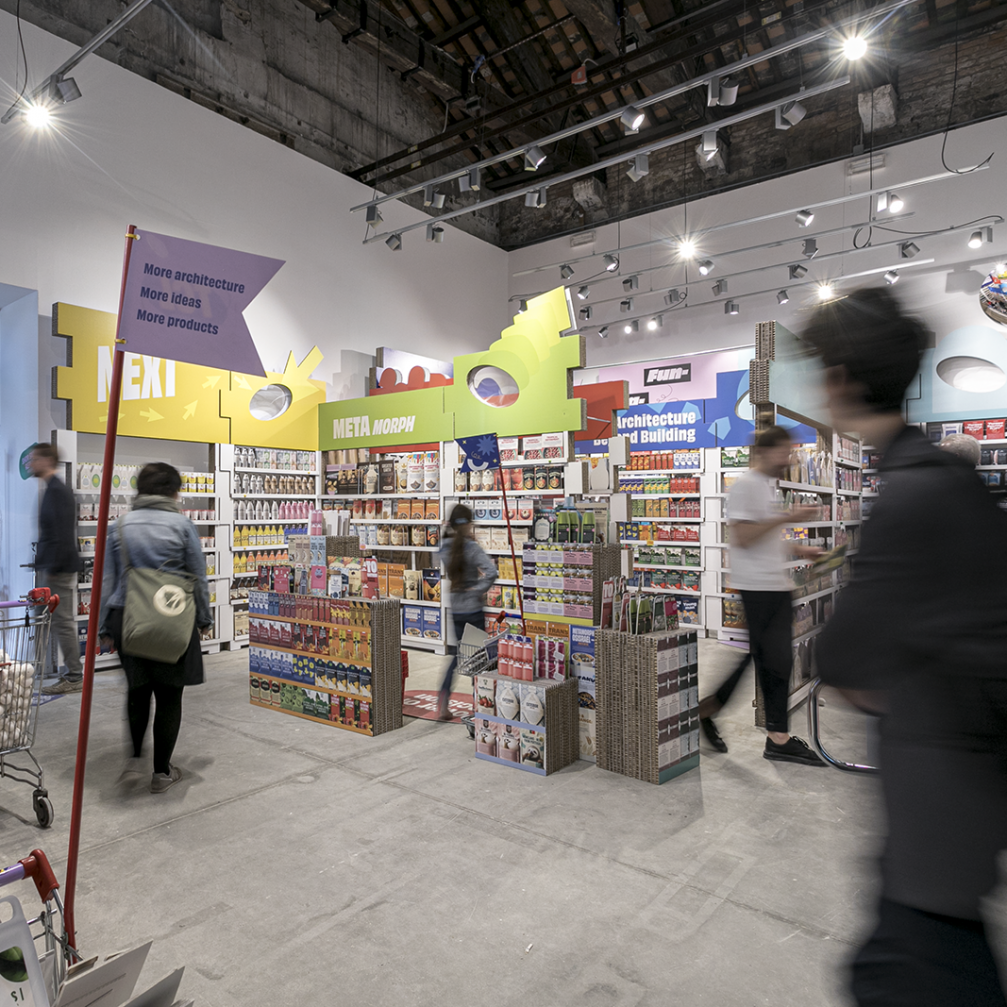
What do architects do in Venice, what they expected and what they didn’t expect from the latest Architecture Biennale, and what to do with idea-driven architecture products «manufactured» in the past 20 years? Architect and researcher Dina Suhanova shares impressions from the opening days of the 18th Venice Architecture Biennale.
The feeling that I am heading to Venice for another shopping spree arose on my way from Marco Polo Airport to the San Zaccaria stop near St. Mark’s Square. It is quite possible that this particular association was triggered by the concept of this year’s Latvian Pavilion, where the content of the past ten architecture biennials has been distilled into 506 unique products using artificial intelligence tools and arranged on cardboard shelves in a 70 square-meter space (design team: E. Cerbulis, I. Menģelis, T. Kampars, K. Rubene; curator: U. Jaunzems–Pētersons). The Latvian Pavilion T/C Latvija has attracted a lot of attention, and has been featured in several prominent publications and highly regarded biennale guides such as The Guardian, Monocle, Dezeen, Wallpaper, Artribune, Elle Decor, Der Standard, Domus, Architects’ Journal, and others. It has also gained popularity on Instagram as one of the most colourful and photographed exhibitions because everyone wants to find their own special, familiar, and meaningful «product». Each Venice Architecture Biennale offers an incomprehensible amount of intellectual depth and information density. The Latvian Pavilion team has successfully embraced and utilised the analogy of a shopping centre, transforming architects’ ideas into commodities and offering a unique «shopping» experience at the biennale. After all, the idea «shopping» at the biennale is just as important as the excitement of getting together and the anticipation of opening days. That is why every other year professionals, researchers, theorists, curators, practitioners, and students from the field of architecture flock to Venice.
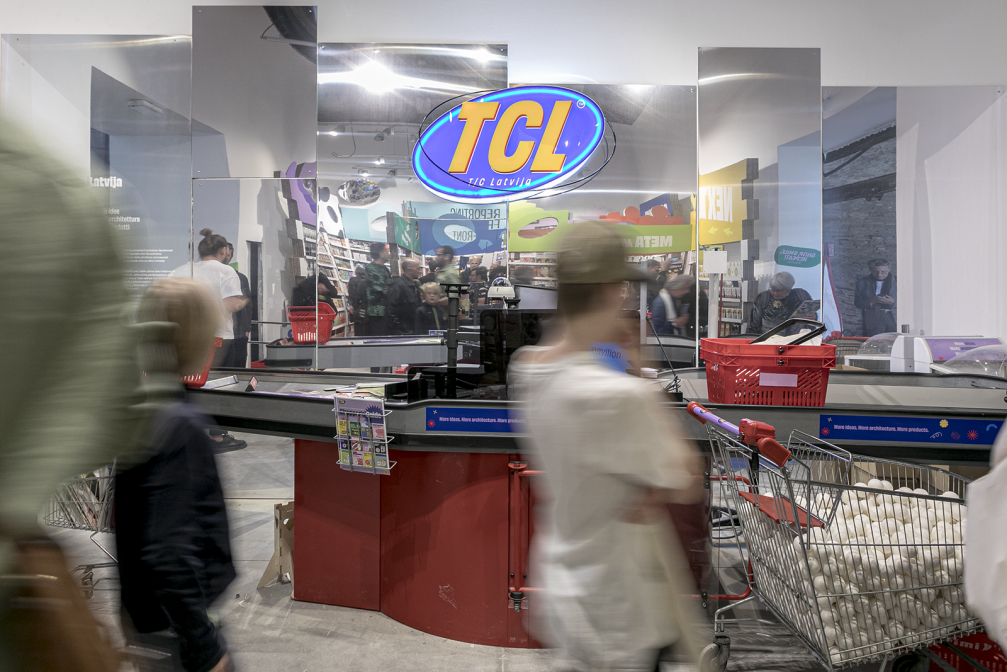
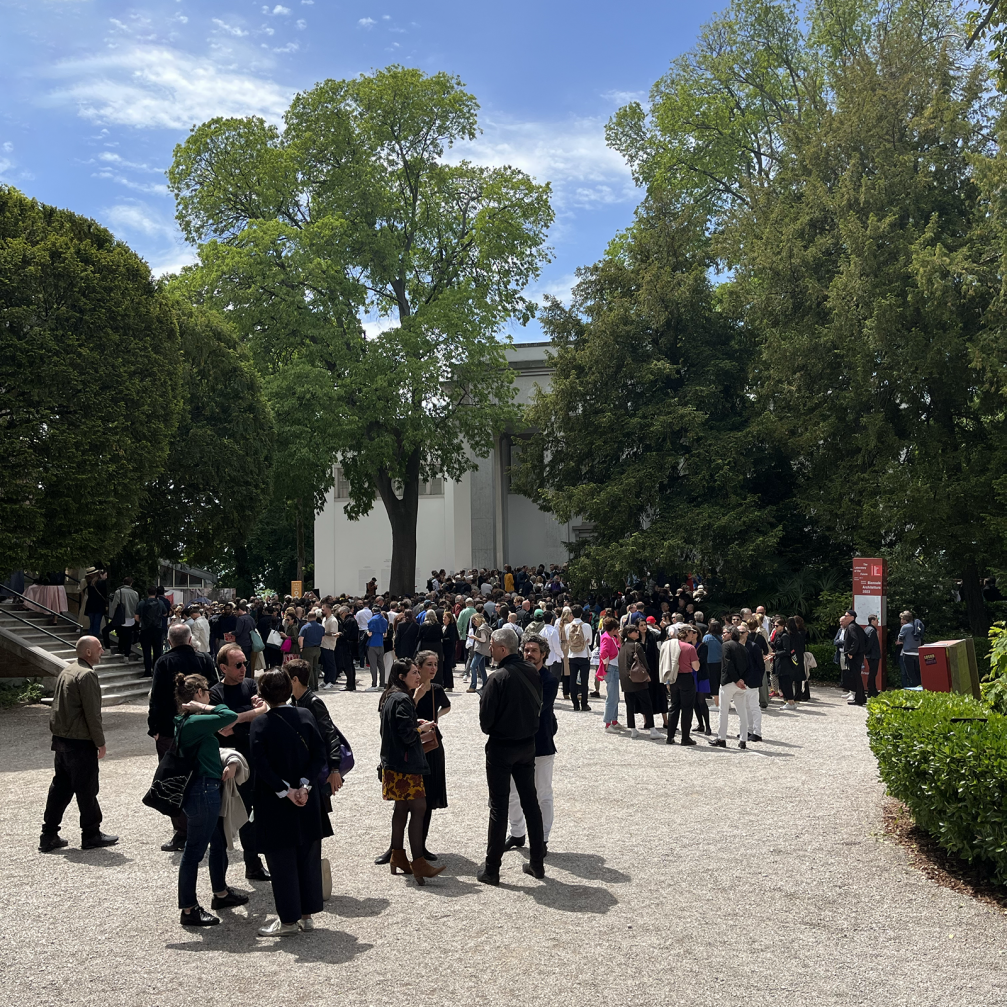
While writing this review, I read an article on Dezeen about the frustration of Patrick Schumacher, the leading architect at Zaha Hadid Architects, who expressed his despair that architecture is no longer exhibited at the Venice Architecture Biennale. He referred to it as an anti-architecture biennale and expressed his incomprehension about national pavilions «refusing» to exhibit their architects’ work. «Architecture Biennale 2023 — for what?»—with this question, architect Andris Kronbergs and design professor Barbara Ābele also begin their assessment of the exhibition. They write, «The 18th International Architecture Biennale is a research laboratory, a provocateur of problematic questions, and an appellant to the world’s common sense. However, it must be acknowledged that the themes and issues of the past three biennales have started to repeat.» Kronbergs and Ābele aim to defend the architectural profession —g lobally significant questions are already addressed in everyday professional activities, incorporated into various ecological policies and social scenarios, so it would be worth discussing the target audience of the biennale. Who exactly are these similar, somewhat declarative Venice exhibitions addressed to? Politicians, investors, society as a whole, or specific groups within it, or perhaps architects? Who precisely and by what means will address these predominantly unanswered observations and research results? Kronbergs and Ābele believe that it is necessary to move from questions to answers — and better yet, those that utilise the means of architecture, not art.
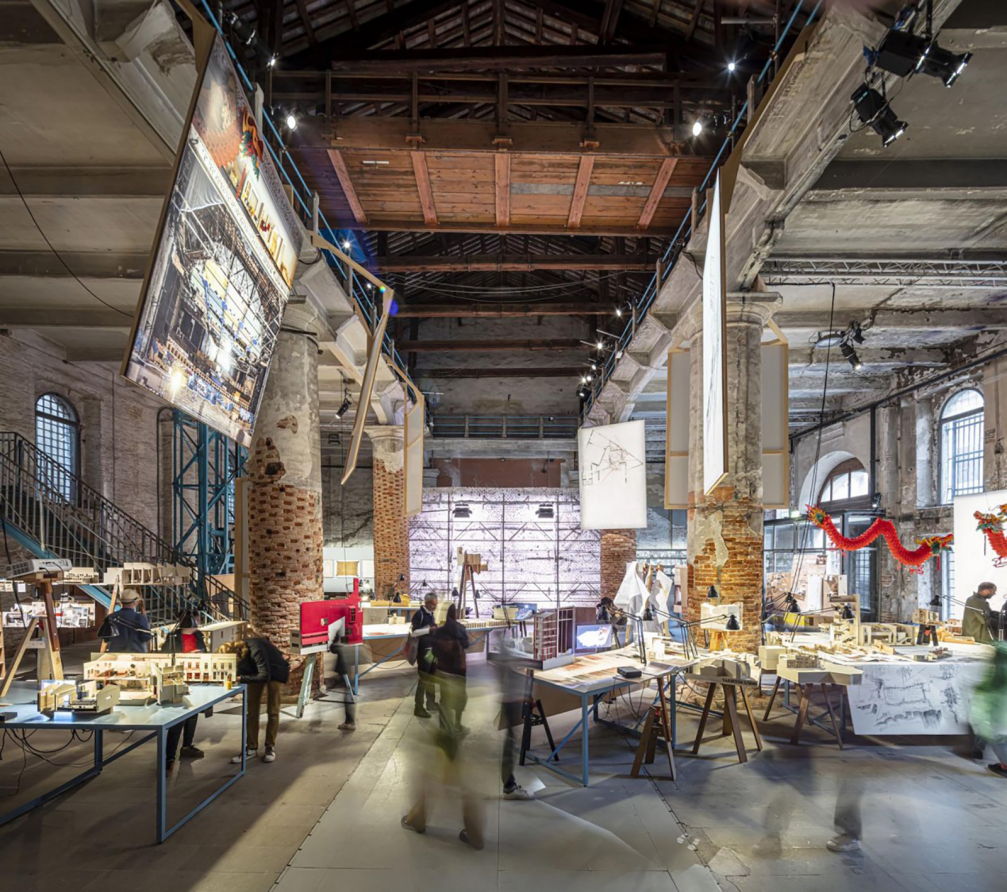
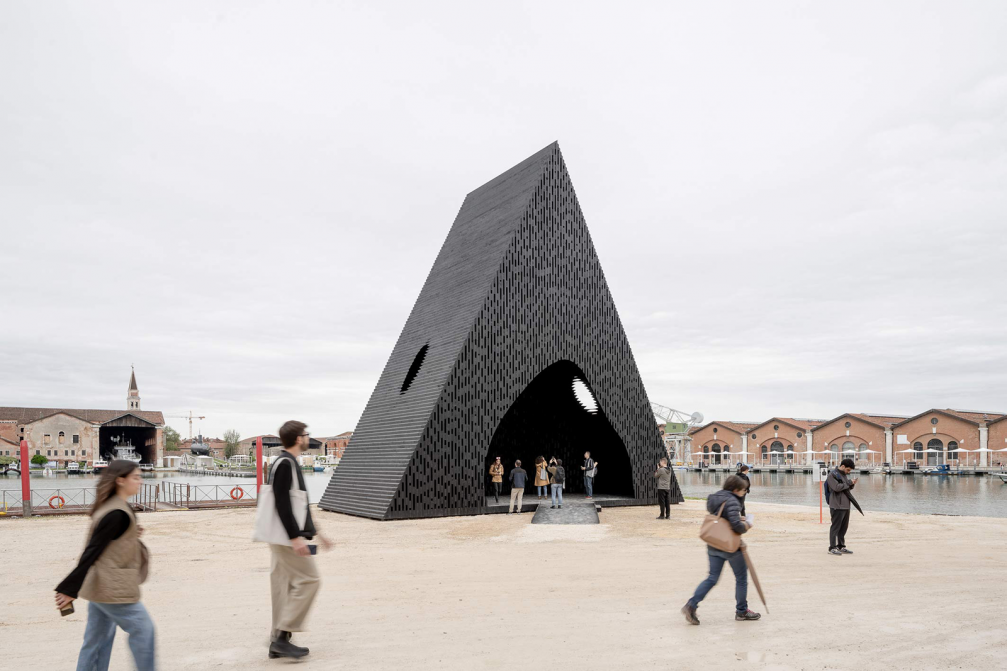
Architect Kārlis Melzobs (Gaiss Arhitekti) shares similar thoughts: «One of the values of the architecture field is the ability to look at a wide range of topics — starting from architecture as a social, political, and cultural phenomenon, and ending with everyday solutions that are aesthetically driven. It seems that in the Venice Biennale, there is an increasing tendency to focus on the outer boundaries of architecture’s sphere of influence, where architecture merges with other domains.» He also questions whether the Biennale lacks examples of architecture as a craft. «I would like to believe that it is still possible to create powerful impulses for change using the direct tools of architecture.»

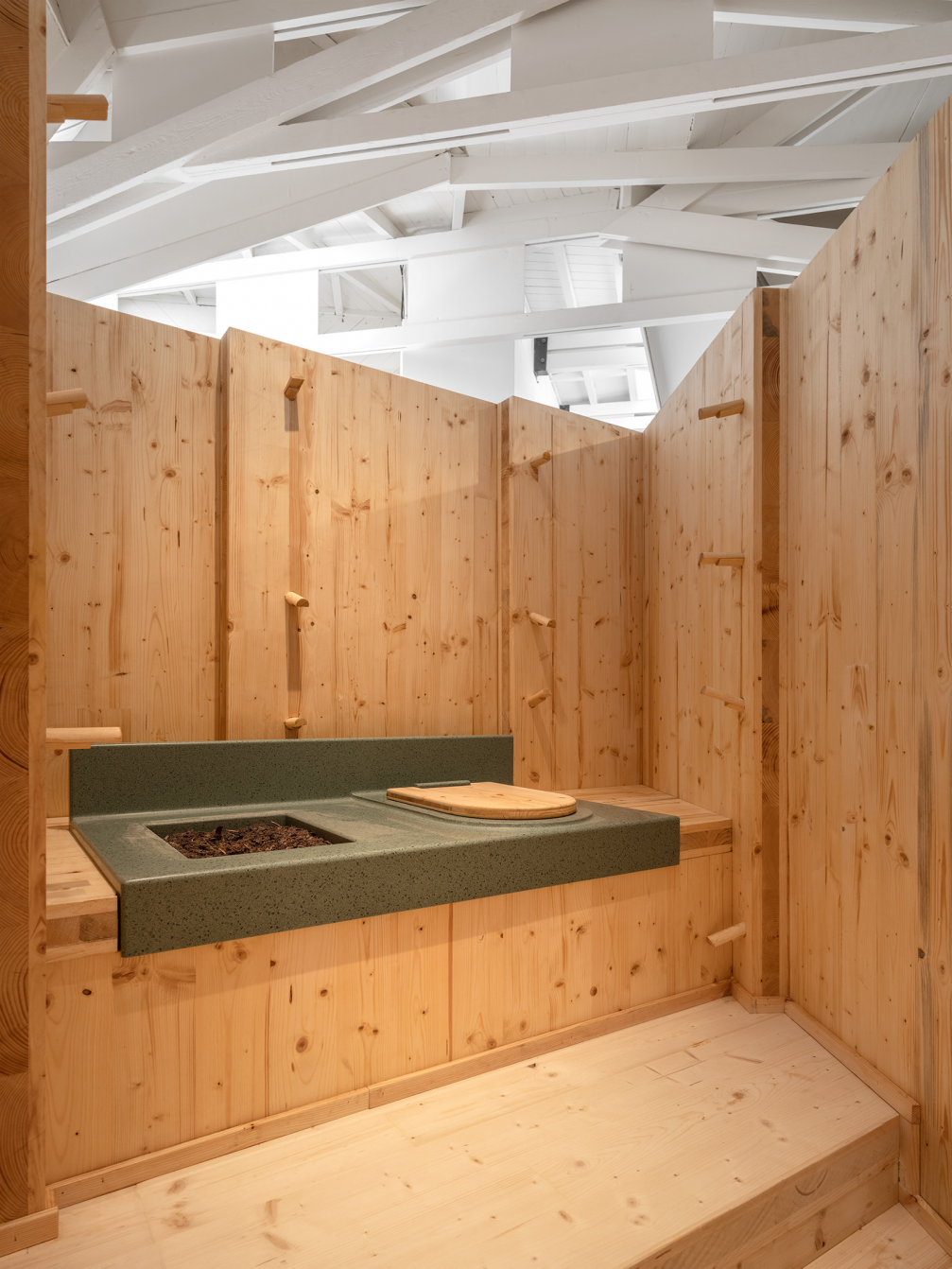
Regarding the need to exhibit more architecture at the biennale and the role, significance, and future of it, I often discuss these matters within my architectural bubble. This year, the Biennale curator, Lesley Lokko, a Scottish-Ghanaian architect, educator, bestselling author, and founder of the African Futures Institute, suggests looking at the «big questions» by considering Africa as the birthplace of humanity and a mirror in which to see a common future. Lokko’s message about practising and creative professionals in the world of architecture and art always existing in relation to something else — culture, ideology, place, analogue or digital reality — seems logical. She offers the opportunity to share not only the significant themes of decolonisation and decarbonisation as acts of solidarity but also the germs of new forms of identity. Just as the understanding of gender in Generation Z is fluid, the approach to the future could also move towards a more hybrid, mutable, and less fixed perspective of the world.
The main exhibition is primarily composed of two thematic sections: Force Majeure in the central pavilion’s Gardens and Dangerous Liaisons in the Arsenal’s Corderie, as well as Curator’s Special Projects . The 16 exhibitions in the central pavilion are created by small African and diaspora architectural practices, emphasising the formation of architecture in conditions of «unavoidable force». I appreciate Lokko’s effort to expand the forms and tools of architectural practice, highlighting that the human aspect is still superior to the digital, that imagination is a tool with enormous potential, and that a holistic view of architecture, publications, curatorial work, shaping public discourse, as well as the synergy between art and architecture, are legitimate ways to practise architecture. I agree that the world of the future demands a different and broader understanding of the architectural profession. The curator intentionally addresses the participants as «practitioners» rather than «architects», «urbanists», «designers», or «academics». The architectural collectives exhibited at the biennale, utilising available digital tools and methods of visual-spatial analysis, also perform significant work as archaeologists and investigators (for example, projects such as The Nebelivka Hypothesis from Ukraine, Forensic Architecture, and Killing Architects (China)). In Lokko’s work, the fight for equality and cultural and racial identity is crucial. In this context, it is concerning that the Italian government denies visas and entry to the country for many of the collaborators and team members from Africa — architectural critic Oliver Wainwright tweeted about it, referring to Lokko, even before the biennale.
The exhibitions of 64 national pavilions are on display this year at the Biennale in the Gardens, the Arsenal, and throughout the city. One of my favourites among the national pavilions, even before the Venice Golden Lion ceremony on Saturday, 20th May, when the awards and acknowledgements were presented, is the British Pavilion, where, as noted by Schumacher, «there is no architecture at all». Borrowing the title from a quote by African American writer James Baldwin — «There is a reason, after all, that some people wish to colonise the moon, and others dance before it as an ancient friend,» — the curator emphasises everyday rituals as spatial practices that unite various diaspora communities. The pavilion features installations by six artists and designers living in the United Kingdom, complemented by a specially curated film and sound design. The exhibition’s portrayal of diverse communities, their rituals, daily practices, customs, and traditions that coexist but often go unnoticed in our shared built environment, is positively motivating and inspiring. The sense of community is also experienced at the opening of the Mexican Pavilion, where a full-scale basketball court represents socially significant processes, turning the space for sports and recreation into a support infrastructure for the local community’s political, social, and cultural transformations.
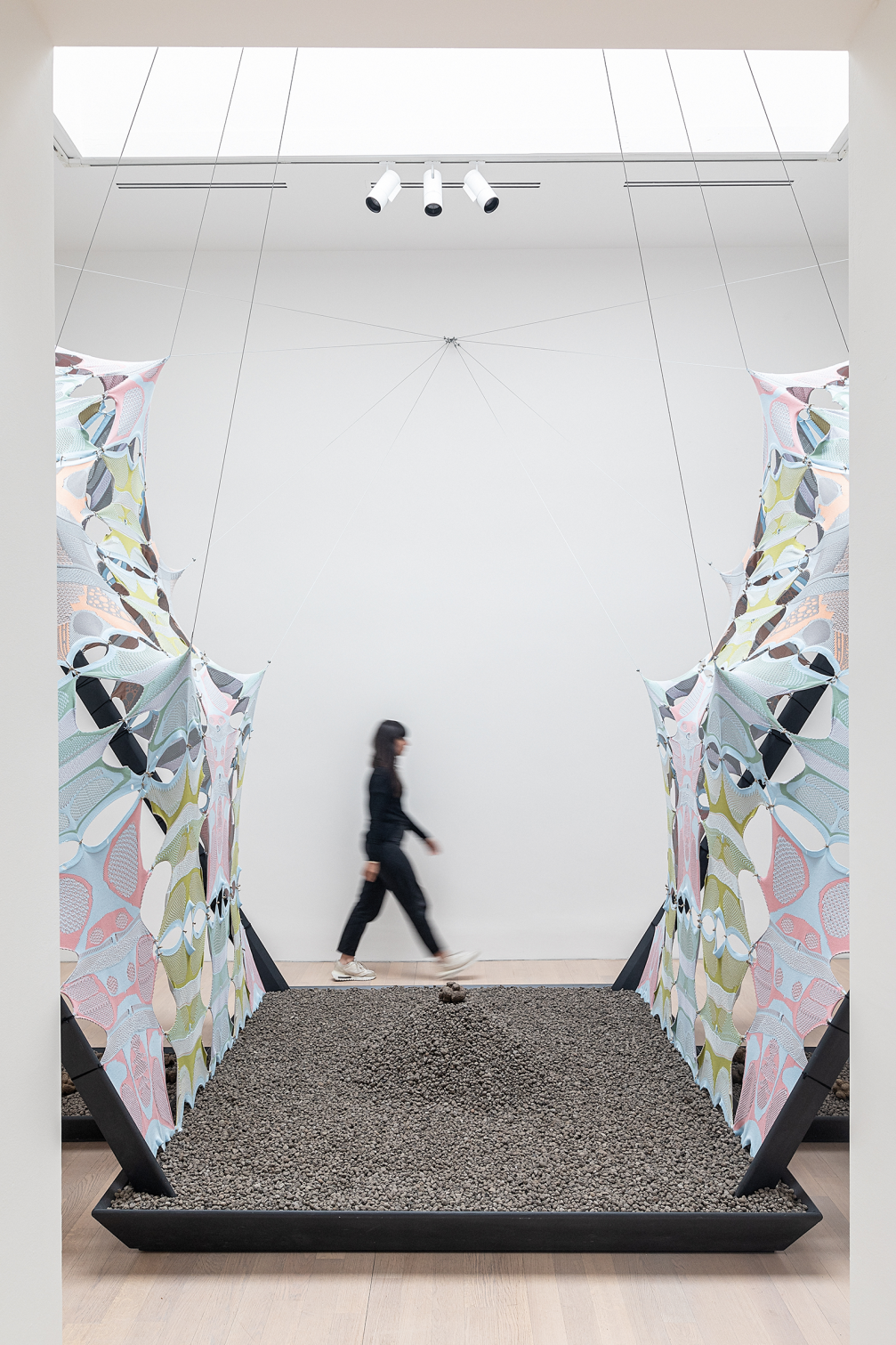
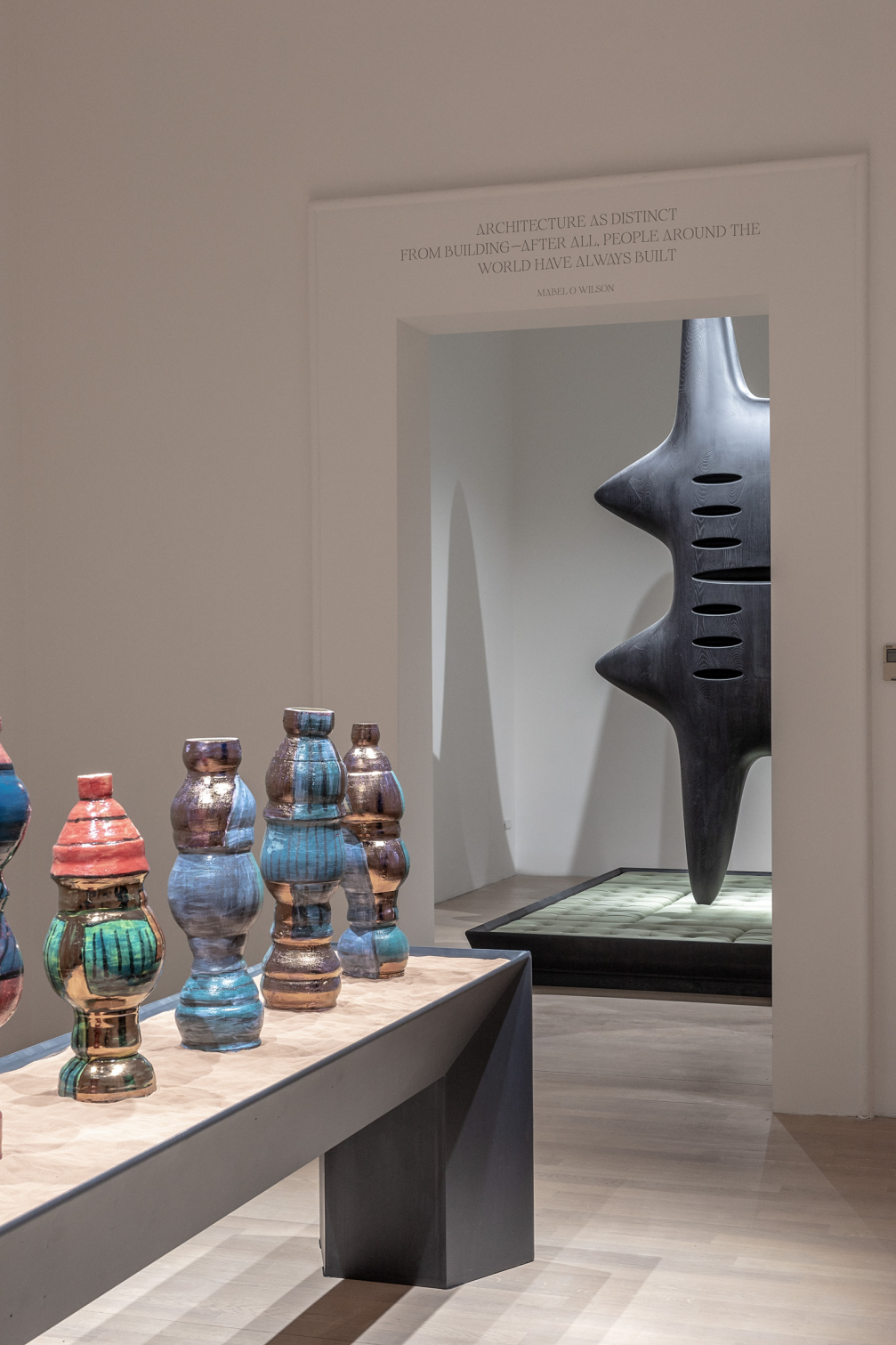
The Golden Lion for the best national pavilion was awarded to the Brazilian Pavilion, titled Terra (meaning Earth), where the curators Gabriela de Matos and Paulo Tavares interpret Brazil as soil, fertilisers, resource-building materials, and territory by covering the floor of the building with compacted soil. Based on scientific research on the best-preserved indigenous territories, the Quilombola lands, the Brazilian team concludes that decolonisation and decarbonisation go hand in hand, highlighting traditions associated with land management. These universal ancient indigenous knowledge can help us understand how to build cities and communities of the future.
The Biennale, its curator, and several country pavilions emphasise responsible resource circulation and utilisation. They explore reducing environmental impact by using materials from previous exhibitions, producing on-site, reducing delivery costs, and the need for human resources during construction in Venice. The curatorial group of the German Pavilion this year presents the theme Open for Maintenance, not simply as an exhibition but as a series of events to promote a construction culture that minimises the exploitation of human and material resources, recognising that ecological and social sustainability are inseparable. The curatorial team and activists organise the collection, archiving, and implementation of surplus materials and resources from previous exhibitions on their website, as well as hosting construction workshops and fostering connections. Svereal participats critically examine not only resource consumption but also the architecture of the pavilions themselves. Several national exhibitions analyse the technical condition of the buildings (Netherlands, Germany), their relationship with the gardens, neighbour relations (Switzerland), openness or closeness to the city of Venice and its locals (Austria), and invite care, love, maintenance, and long-term appreciation of the buildings even after their construction (Japan). It seems that many are concerned not only with the content of the Biennale but also its coexistence with the city and its residents. Its alienation is criticised, so the efforts of the Biennale to bring the programme closer to society and local residents are commendable. The Unfolding pavilion project, which is now in its fourth year, is a temporary pop-up exhibition intervention dedicated to the Biennale Gardens this year, criticising the Biennale as an institution that has effectively closed and colonised public green spaces that could be used and opened to the public when there are no exhibitions. It seems that the form of the pavilion buildings and the configuration of spaces are increasingly restrictive to the ideas of current and future exhibitions. The existing order is questioned, and alternatives are offered. The exhibition provides critical feedback on the idea of the Biennale itself. The pavilion is open, accessible to all, and invites the public to participate in the transformation of the exhibition by removing the bricks. This project allows us to reconsider the limitations of exhibition spaces, rethink and analyse the presence of pavilions, and propose alternatives (Lithuania and Estonia).
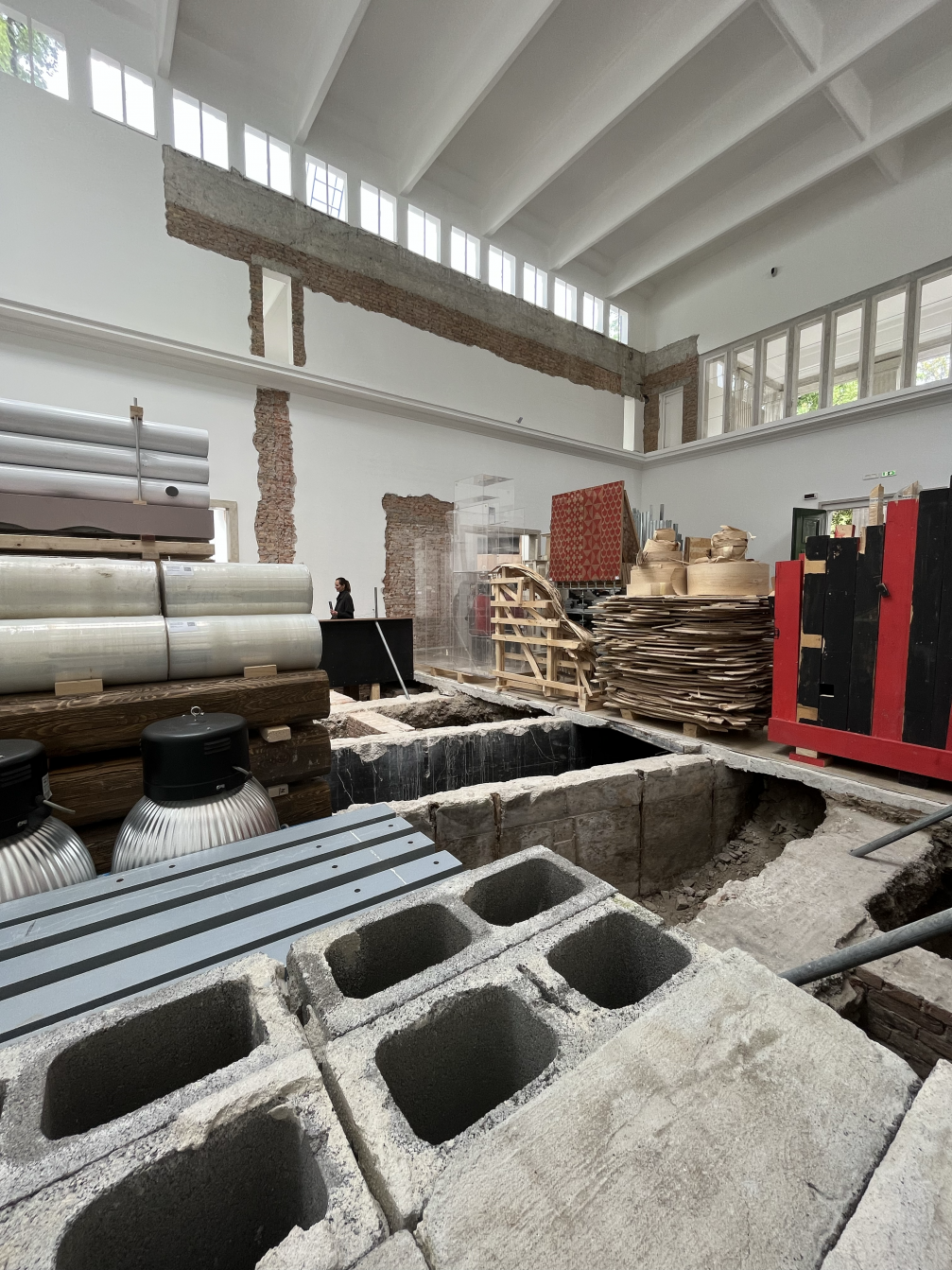
Architecture is everything, and everything is architecture — this may not be a popular opinion among practising, designing, and constructing architects, but in my assessment, this year’s «anti-architecture» Biennale was emotional and socially significant, giving space, place, and voice to those we don’t know or hear and tend to avoid listening to. Moreover, the curator has challenged the usual Eurocentric view of the world, offering new contextualised knowledge or previously unused applications of skills and resources. It is impossible to retell everything the Biennale shows in the limited scope of a review. It would be like analysing everything available at a hundred malls. Therefore, one must go shopping and make their own choices. As the slogan of T/C Latvija suggests, another Biennale means there will be «more ideas, more architecture, more products!»
The 18th International Architecture Exhibition of the Venice Biennale is open until November 26 and can be experienced not only in the Biennale Gardens and Arsenal, but also in other locations in the city.
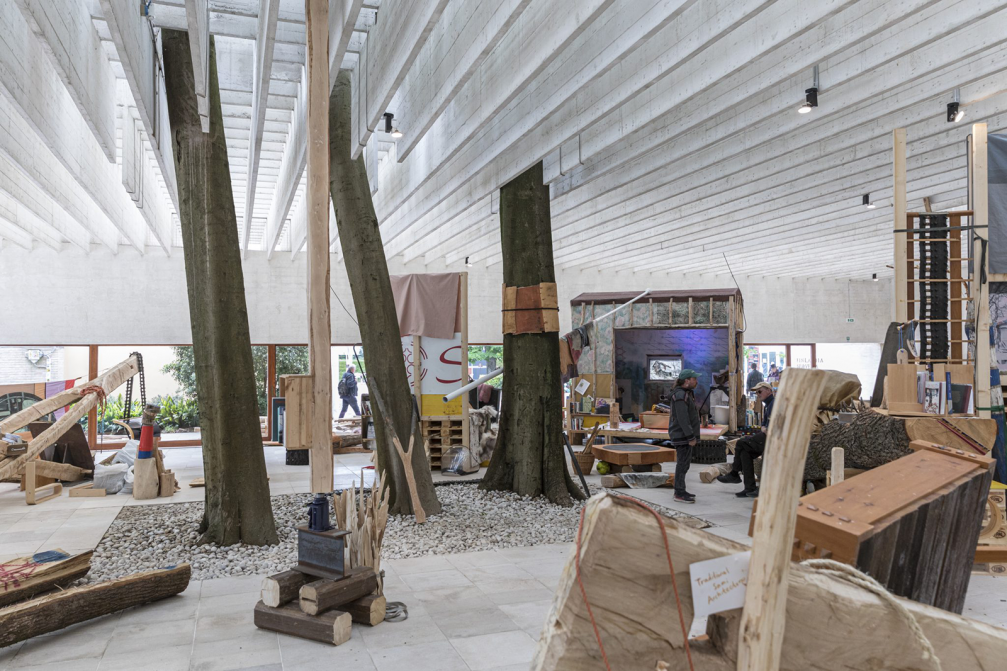

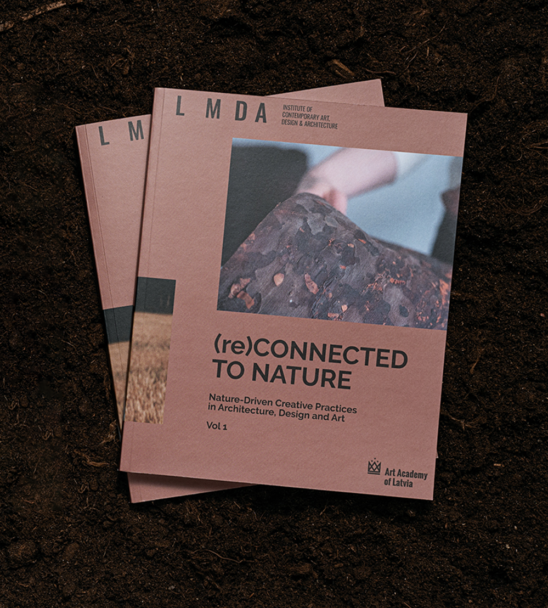
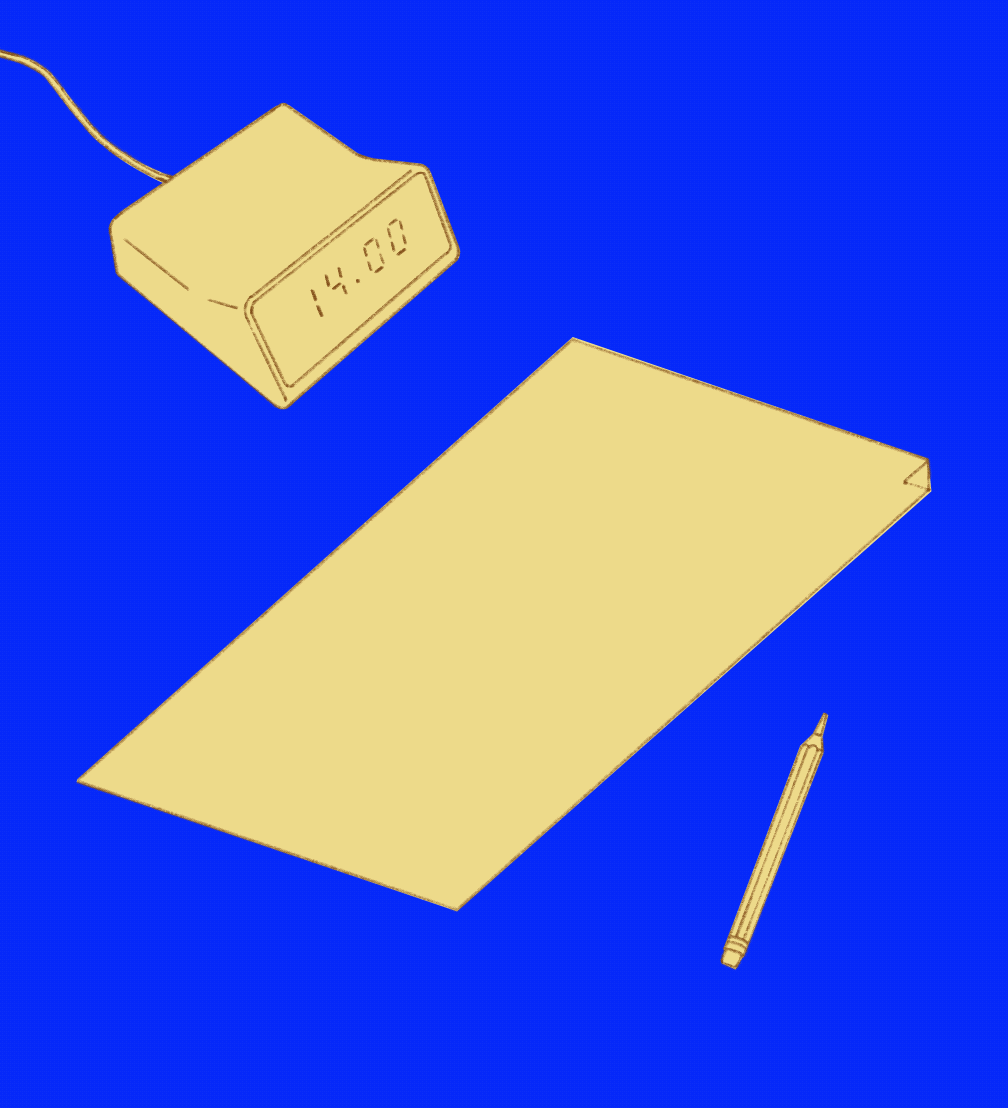
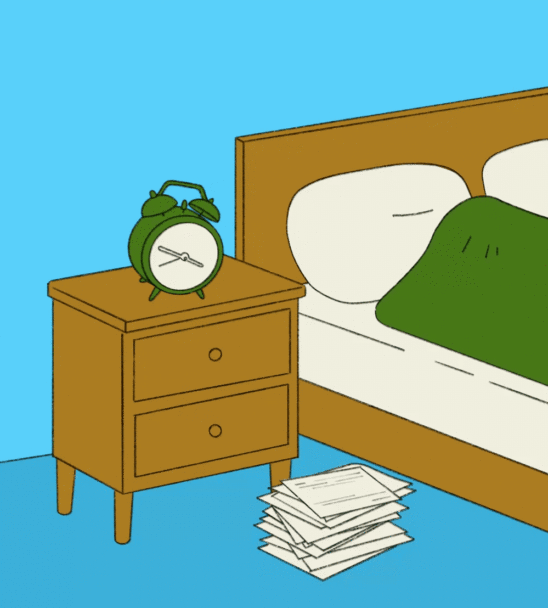
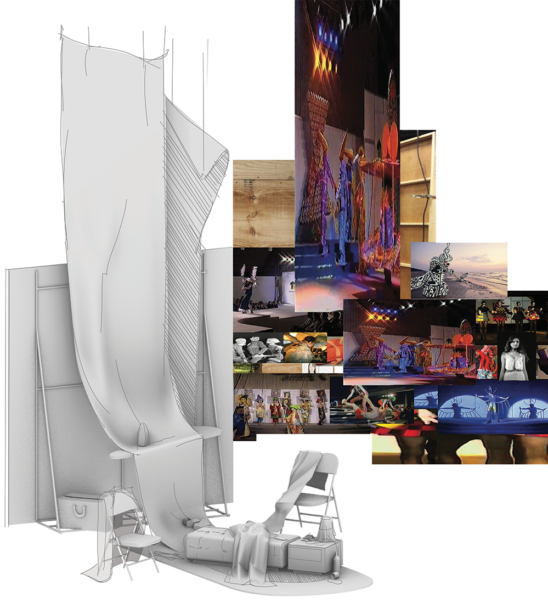
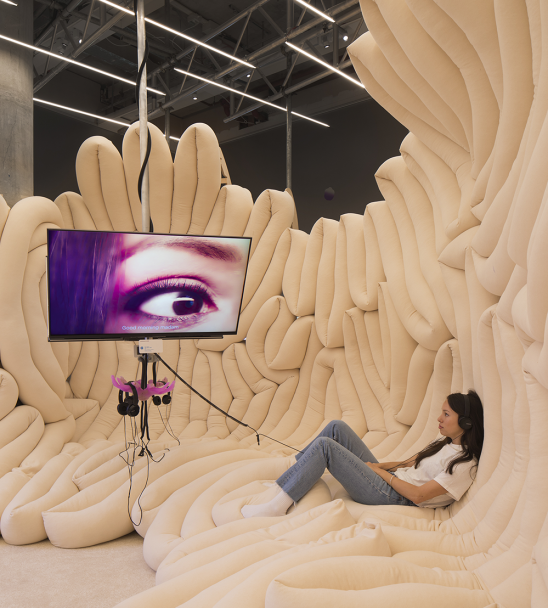
Viedokļi